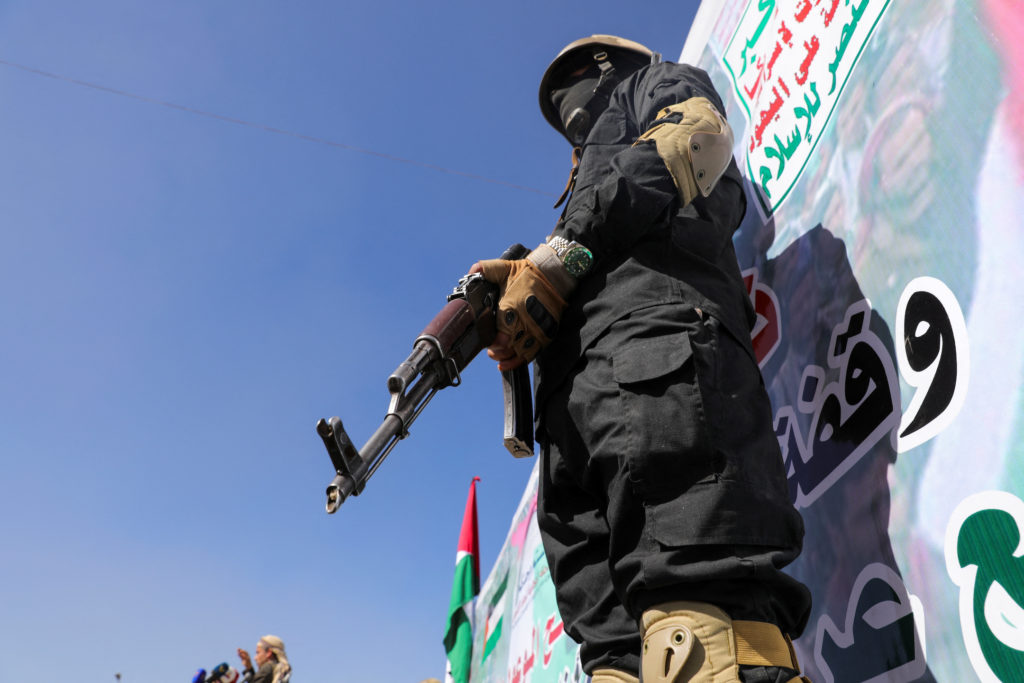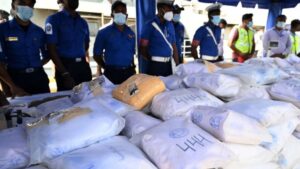
Written by Advait Panda, Parikshit Panigrahi and Aditya Charan
Introduction
For more than 2 years, the United States has supported Saudi Arabia in a war against the Houthi movement in Yemen. This poses a very big potential threat to global security and raises several human rights problems. Houthis are Zaydi Shiites, or Zaydiyyah. Shiite Muslims are a minority community in Islam who believe that the rightful successor to the prophet Muhammad should be passed down through the prophet Muhammad’s bloodline.
Historical Background
Zaydis are a minority of Shiites, the oldest branch of Shiites named after Zayd Bin Ali. In the eighth century, Zayd Bin Ali launched an uprising against the Ummayad Caliphate. After his death, the Zaydi sect gained prominence as a result of his martyrdom. Though they differ from the “Twelver” Shias of Iran, Iraq, and Lebanon, the Zaydis are recognized as belonging to the Shia branch of Islam in terms of both doctrine and practice. The one aspect of Zayd’s recalled biography that stands out is his opposition to an oppressive government. At the very least, the Houthis have made combating corruption the focal point of their political agenda. The Houthi movement stems from “Believing Youth” (Muntada al-Shahabal-Mu’min), a Zaydi revivalist group founded by Hussein al-Houthi and his father, Badr al-Din al-Houthi, in the early 1990s. Northern Yemen was home to prominent Zaydi cleric Badr al-Din. Motivated by the 1979 Iranian revolution and the 1980s Hezbollah ascendancy in southern Lebanon, Badr al-Din and his sons began creating extensive social and religious networks among Yemen’s Zaydis, who comprise around one-third of the country’s population with a Sunni majority. However, the movement turned political and began to sabotage Ali Abdullah Saleh’s “corrupt” dictatorship in Yemen as well as his backing of the US war on terror. As a result, Saleh found himself at odds with the movement. They organised tribesmen in the north to rebel against the government under the name Ansar Allah (Partisans of God). Hussein al-Houthi was the subject of an arrest order issued by Saleh’s administration in 2004. Hussein was slain by government forces during an attack on the rebels in September 2004. Since then, the resistance movement—known locally as the Houthis movement after their “martyred” leader—has been put an end by the government through a number of military operations in Sa’dah, the Zaydi heartland. However, it did little but fortify the Houthis, who by 2010, when a ceasefire was achieved, had taken Sa’dah from the troops of the government. Reason for Houthis Rise:
When protests broke out in Yemen in 2011 as part of the Arab Spring, the Houthis, now more determined from their military victories and the support they enjoyed in Sadah, backed the agitation. President Saleh, a Zaydi who was the man in power for 3 decades resigned in November 2011, handing the reins to his second in command, Abdrabbuh Mansur Hadi, a Saudi-backed Sunni. Yemen, under the guidance of Saudi Arabia and the UAE, started a national dialogue to resolve internal differences. The Houthis were part of the dialogue. But they fell out with the transitional government of Mr. Hadi, claiming that the proposed federal solution, which sought to divide the Zaydi-dominated north into two land-locked provinces, was intended to weaken the movement. They soon got back to insurgency. Saleh, who was sidelined by the interim government and its backers, joined hands with his former rivals and launched a joint military operation. By January 2015, the Houthi-Saleh alliance had captured Sana’a and much of northern Yemen, including the vital Red Sea coast. (Later the Houthis turned against Saleh and killed him in December 2017).
Post-Arab Spring Developments
The rapid rise of the Houthis in Yemen set off alarm bells in Saudi Arabia which saw them as Iranian proxies. Saudi Arabia started a military campaign in March 2015, hoping for a quick victory against the Houthis. But the Houthis had dug in, refusing to leave despite Saudi Arabia’s aerial blitzkrieg. With no effective allies on the ground and no way out plan, the Saudi-led campaign went on with no tangible result. In the past six years, the Houthis have launched multiple attacks on Saudi cities from northern Yemen in retaliation for Saudi air strikes.
In 2019, the Houthis claimed the attack on two Saudi oil installations that knocked out, briefly, half of the kingdom’s oil output (the Houthi claim was disputed by experts and governments, who said the attack was too sophisticated for the rebels to carry out. The US has blamed Iran). The Houthis have established a government in the north. There are serious allegations against both the Saudis and the Houthis in the war. While the Saudi bombings caused a large number of civilian deaths, the Houthis were accused, by rights groups and governments, of preventing aid, deploying forces in densely populated areas, and using excessive force against civilians and peaceful protesters.
Recent Development in the Red Sea
The Houthi rebels have been re-branded as a terrorist organization by the US after they claimed to have launched their second attack on a US-operated warship in the Red Sea region this week. The Houthis have declared their support for the Palestinian people and pledged to launch additional assaults against US ships in retaliation for the American and British strikes.
Global trade has suffered as a result of the Houthis of Yemen’s increasing number of attacks in the Red Sea and Gulf of Aden, two important trading routes. The Houthi rebels have announced their support for Hamas and claimed to be utilizing drones and rockets to target commercial ships that are headed for Israel. For weeks, the Houthis, who are supported by Iran and hold sway over a large portion of Yemen, have been assaulting ships that are traversing the Bab al-Mandab Strait at the southern end of the Red Sea.
Operation Prosperity Guardian, an international coalition to protect Red Sea shipping, was recently announced by US Secretary of Defence Lloyd Austin. Abdel-Malek al-Houthi, the commander of the Houthis, issued a warning, stating that if Washington became more engaged in the organization’s affairs or threatened Yemen, the group would begin shooting missiles against US warships.
After British energy company BP announced that it was suspending all Red Sea maritime transits, the price of oil and fossil gas increased. According to analysts, if the attacks on vessels continue and more oil corporations decide to stop shipments through the Red Sea, energy costs will probably increase even more.
Concerns over disruptions to global trade and geopolitical tensions in the Middle East following attacks on ships by Yemen’s Houthi rebels, who are associated with Iran, in the Red Sea kept the global oil benchmark, Brent, close to $80 per barrel. Shipping companies might choose to redirect their vessels or take on the danger of going via the Red Sea and the resulting higher insurance rates. There is a chance that these two options will cost more and cause delays.
Amid rising tensions in the Red Sea region, India has pledged to take immediate action against those guilty of the attacks on the commercial vessels MV Chem Pluto and MV Sai Baba, both of which are tied to India. Attacks by the Houthi rebels in Yemen on ships utilizing the vital Red Sea trade route have increased economic instability for more than a month. The Indian government has taken the recent drone assaults on the MV Chem Pluto in the Arabian Sea and the MV Sai Baba in the Red Sea very seriously. The Navy is now keeping a closer eye on the ocean. It emphasizes India’s role as a regional security supplier and its commitment to working with other countries to guarantee the safety of maritime trade.
Conclusion
In conclusion, the Houthi movement-related crisis in Yemen and its ramifications for international trade, human rights, and global security continue to be complicated and gravely troubling issues. In addition to broader regional factors following the Arab Spring, the Houthi movement’s rise to power was propelled by complaints against perceived marginalization and corruption by the government. But as a result of their rise, Saudi Arabia, which saw the movement as a front for its adversary Iran in the region, launched a military intervention. Both sides in the ensuing conflict are accused of violating international law and violating human rights, which has resulted in immense humanitarian suffering. Recent events have increased tensions and sparked worries about the security of important trade routes, especially the Houthi rebels’ attacks on commercial vessels in the Red Sea.
India’s recent pledge to improve marine security emphasizes how crucial regional cooperation is to counter the challenges posed by the Yemeni conflict. Coordinated diplomatic efforts and multilateral initiatives will be crucial in securing a peaceful resolution and minimizing the damage to international security and stability as long as tensions remain high and there is a chance of further escalation.
International attempts to defuse the situation, including Operation Prosperity Guardian, show that maritime security and continuous international trade are important. However, there are many players involved and conflicting interests, which makes the problem complex and makes finding a long-term solution difficult.


